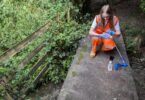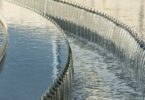In this Water Quality Month Q&A we spoke with Watearth CEO, Jennifer Walker, about their solution to improving water quality through stormwater management, green infrastructure and drainage planning.

Tell us about your company
Watearth is a U.S. based water resources, civil, and environmental firm with extensive experience in green infrastructure, Hydrology & Hydraulics, site design, and stormwater.
Why is water quality still a topic of concern globally?
Water is a precious resource, and very little of it is fresh and clean enough to meet our typical needs. Water is for drinking, but it also supports industry, agriculture and ecology. Over 7 billion people and all over life relies on water, so it’s important to make sure we are investing in its conservation.
Why is Water Quality Month important to you?
Watearth is a water-quality focused firm, working to ensure water quality at the site filtration level as well as at the regional level. We want to develop public awareness around this resource that is often taken for granted.
What role does the water industry play in improving water quality?
The water industry supplies and treats water, but the water industry does not have exclusive control over climate change and pollution. Corporations and individuals outside of the industry all have a certain degree of responsibility to improve and protect water quality by limiting their overall environmental impact.
What steps are you taking to help improve water quality?
Here at Watearth, we take on projects that directly seek to improve water quality. We are monitoring stormwater, working with green infrastructure to limit runoff from grey infrastructure, and working with drainage planning.
One such example of Watearth’s work in this area is the Los Angeles County Public Works (LACPW) Adventure Park Regional Stormwater Capture and Integrated Water Resources project. This Caltrans-funded regional stormwater quality project included diversions from the San Gabriel River Watershed into a 19.5ac-ft underground stormwater capture facility. Untreated discharges are sent to the adjacent sanitary sewer and overflows were treated on site and then released into Sorensen Drain. Flows into the sanitary sewer are treated at the Los Coyotes Reclamation Plant and reused as non-potable irrigation water.
Watearth managed the project and performed civil design, permitting, Phase I and Phase II Environmental Site Assessments, groundwater monitoring, sampling of the receiving/contributing stream (Sorenson Drain), development of surface water and groundwater sampling plans, development of a plan for pumping tests, oversight of 50-foot depth monitoring well and extraction well installations, oversight of geotechnical studies, performing groundwater sampling and monitoring activities, and preparation of technical memorandums documenting the results of the surface water and groundwater sampling activities.
Additionally, the Watearth team worked on the Port of Corpus Christi (Texas) Authority Drainage Master Plan. Watearth developed a Storm Water Master Plan for the Inner Harbor and Rincon areas by managing storm water volume and quality of receiving waters under various growth and development scenarios. We implemented Green Infrastructure for new stormwater Best Management Developed Green Infrastructure solutions that work in conjunction with grey infrastructure.
Watearth has also worked in the Bay Area with a major utility client, performing stormwater management on 24-acre site involving Remedial Action Plan and NEPA/CEQA Initial Study (IS) and includes risk level evaluation and BMPs and Phasing evaluations adjacent to Caltrans ROW. Watearth evaluated and recommended onsite treatment measures, and evaluated risk level for site and methods to modify risk level. Selected stormwater BMPs for construction phase. Developed Stormwater Pollution Prevention Plan (SWPPP). Performed stormwater inspection (QSD and QSP) services. We performed civil and landscape design for post-construction stormwater BMPs. This resulted in a reduced risk level from 3 to 2.
These projects all focus on improving water quality, a key focus of the work we do at Watearth.
If you could change one thing about the way water quality is managed currently, what would it be?
We would like to see to see an emphasis on green infrastructure over grey. This way we can see stormwater being returned to the earth instead of running off into natural bodies of water and contaminating water resources. Impermeable surfaces like roads and parking lots create sheet flow and high volumes of stormwater that pick up and collect pollutants rather than infiltrating natural soil quickly.
The amount of extensive impermeable surfaces in our cities are a direct result of car-centric culture that developed during the 1940’s emphasis on suburban development – often referred to as urban sprawl. Compare this to European cities, where there is generally much less pavement.
What are your hopes for the future of our water sources?
We hope to see a future in which water sources are easily accessible, and that they are maintained publicly for public and ecological benefit. Two words to keep in mind for the future of water sources are resilience and sustainability. We have to make sure we have safe, clean water sources for years to come.
What role do you think technology will play in securing water quality?
Water capture and filtration will have an even greater role in water quality going forward. However, a singular technological solution is not a fool-proof resolution to water supply and water quality challenges. The best overall option is to reduce our impact on the environment at a societal level in order to ensure that clean water is available to all.
Editor’s note: This Q&A has been edited for clarity
Do you have an article to share? Click here to submit or if you’d like to subscribe to our weekly newsletter, click here.







